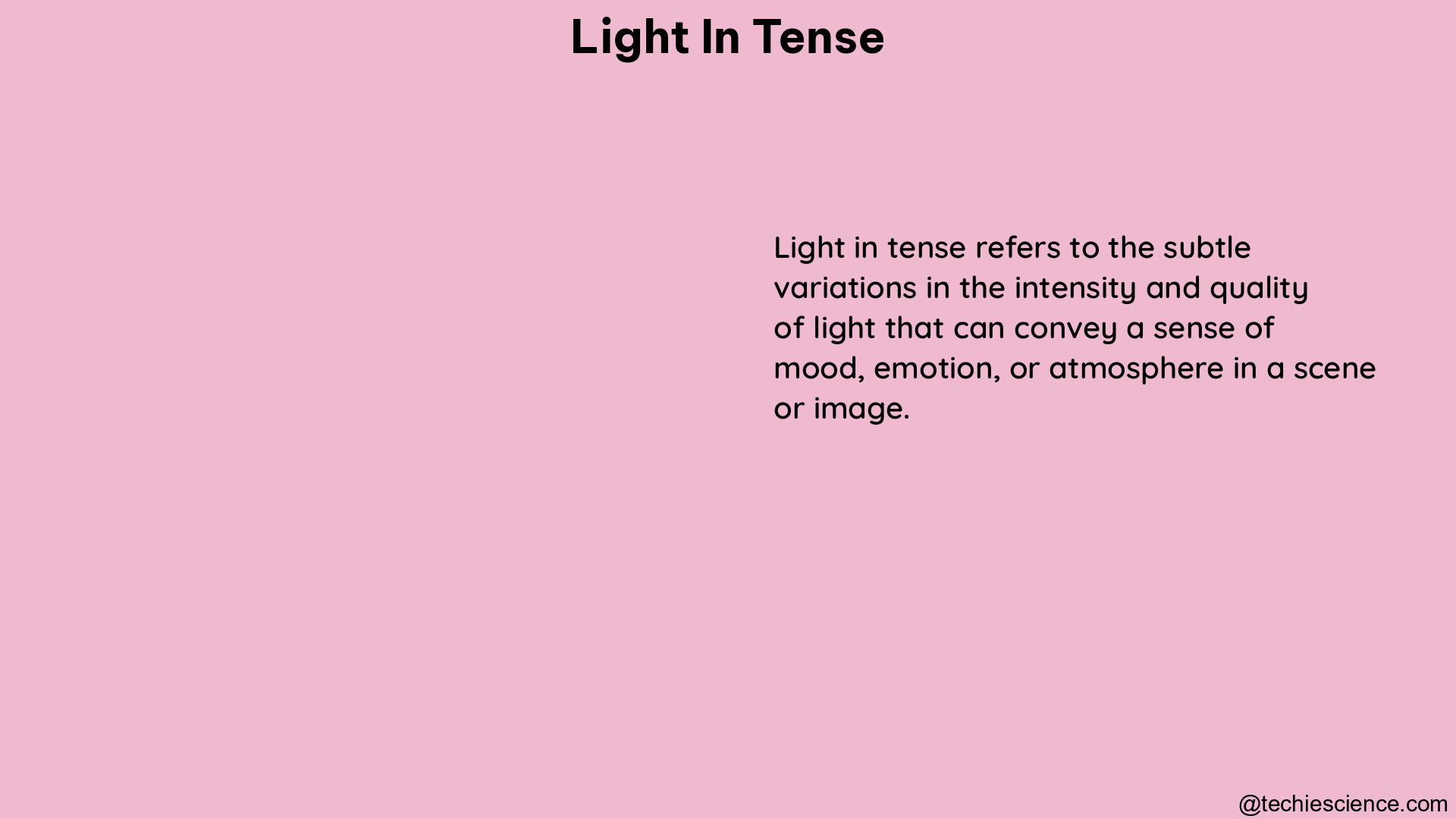The verb “light” in English grammar is a versatile word that can take on various forms depending on the tense and context. This comprehensive guide will delve into the intricate details of using “light” correctly in different tenses, providing a valuable resource for English language learners and enthusiasts.
Infinitive Form
The infinitive form of the verb “light” is “to light.” This form is used to express the action of illuminating or igniting something. Here are some examples:
- The sun always lights up the sky during the day.
- We light the candles to create a romantic atmosphere.
- Fireflies light the path in the dark forest.
Present Tense

Present Simple
In the present simple tense, the verb “light” takes the following forms:
Singular:
– I light
– You light
– He/She/It lights
Plural:
– We light
– You light
– They light
Examples:
– He lights a candle every evening to relax.
– The torchlight parade lights through the town square at 6 PM tomorrow.
Present Progressive
The present progressive tense of “light” is formed using the present tense of the verb “to be” and the present participle of “light”:
- I am lighting
- You are lighting
- He/She/It is lighting
- We are lighting
- You are lighting
- They are lighting
Examples:
– The firefighters are lighting the controlled burn to prevent the wildfire from spreading.
– The candle-making workshop is lighting up the room with its warm glow.
Past Tense
Past Simple
In the past simple tense, the verb “light” takes the following forms:
Singular:
– I lit
– You lit
– He/She/It lit
Plural:
– We lit
– You lit
– They lit
Examples:
– He lit the firework last night, and it was spectacular.
– She lit the candles, dimmed the lights, and waited for the guests to arrive.
Past Progressive
The past progressive tense of “light” is formed using the past tense of the verb “to be” and the present participle of “light”:
- I was lighting
- You were lighting
- He/She/It was lighting
- We were lighting
- You were lighting
- They were lighting
Examples:
– As I walked into the room, the candles were lighting one by one.
– The performers were lighting the stage with their energetic dance moves.
Past Perfect
The past perfect tense of “light” is formed using the past perfect tense of the verb “to have” and the past participle of “light”:
- I had lit
- You had lit
- He/She/It had lit
- We had lit
- You had lit
- They had lit
Examples:
– By the time we arrived, they had already lit the candles.
– The firefighters had lit the backfire to create a barrier against the approaching wildfire.
Future Tense
Future Simple
The future simple tense of “light” is formed using the future tense of the verb “will” and the base form of “light”:
- I will light
- You will light
- He/She/It will light
- We will light
- You will light
- They will light
Examples:
– The festival organizers will light the lanterns at the start of the event.
– I will light the candles in the living room to create a cozy atmosphere.
Future Perfect
The future perfect tense of “light” is formed using the future perfect tense of the verb “will have” and the past participle of “light”:
- I will have lit
- You will have lit
- He/She/It will have lit
- We will have lit
- You will have lit
- They will have lit
Examples:
– By the time the guests arrive, the staff will have lit all the candles in the dining room.
– The firefighters will have lit the backfire to create a barrier against the approaching wildfire by the time the sun sets.
Common Mistakes
One common mistake when using the verb “light” is confusing the regular and irregular verb patterns. Regular verbs form their past simple and past participle by adding “-ed,” while irregular verbs have unique forms.
For example, the regular verb “to light” has the past simple form “lighted” and the past participle form “lighted.” However, the irregular verb “to light” has the past simple form “lit” and the past participle form “lit.”
It’s important to be aware of these differences to use the verb “light” correctly in various tenses.
Reference Links

Hi…..I’m a graduate with a Bachelor’s degree in English Literature. I wish to do a Masters in the same field someday and continue my career in Academia.
Let’s connect through LinkedIn: